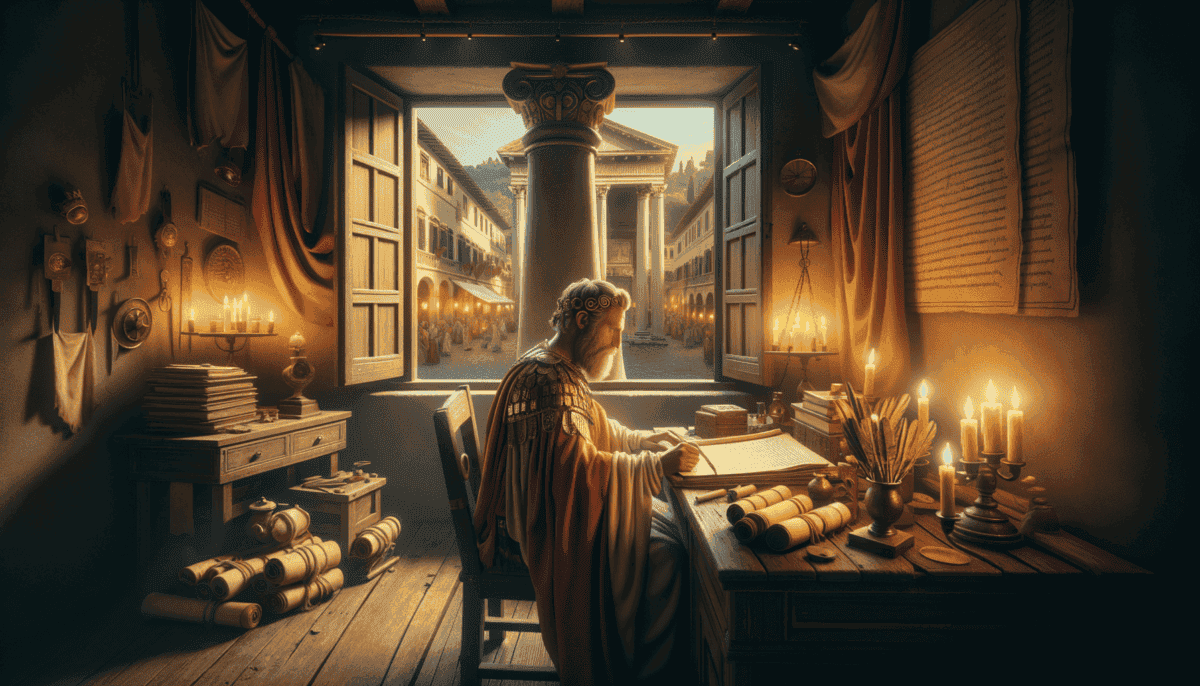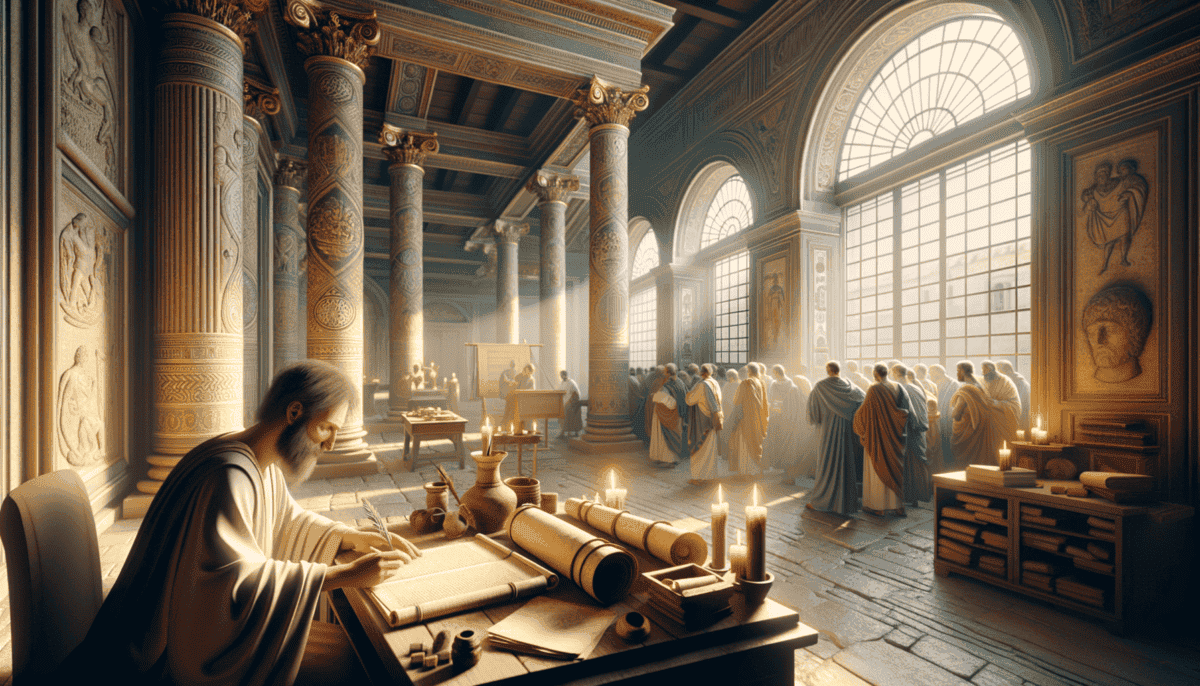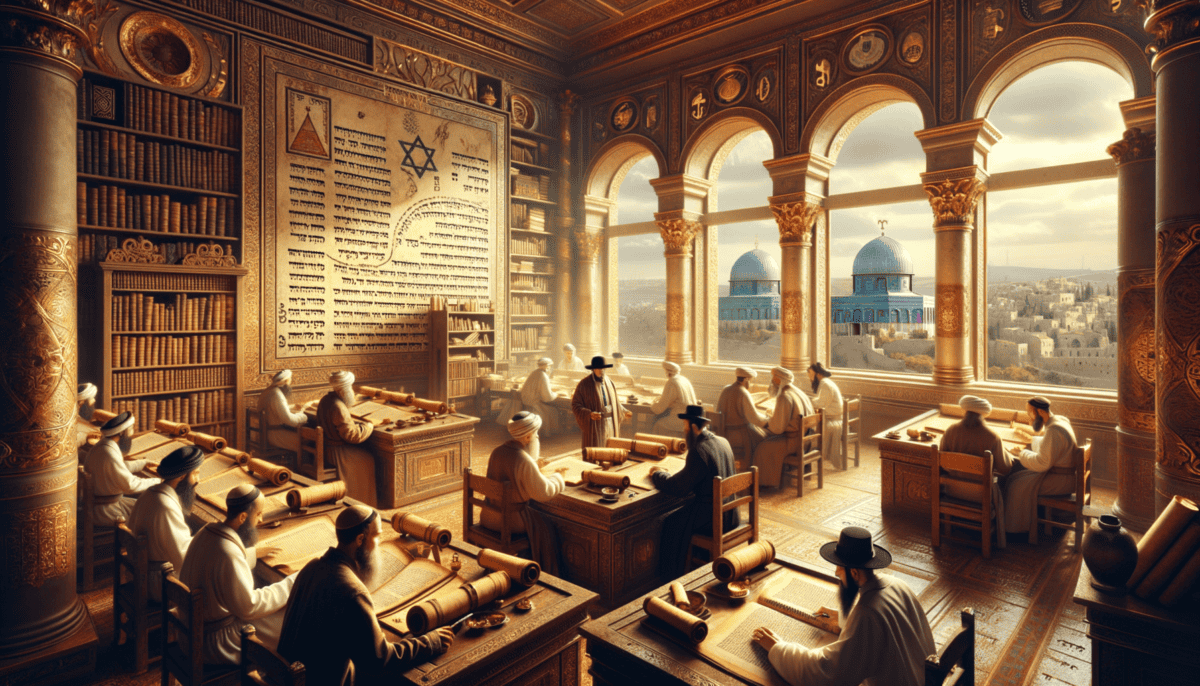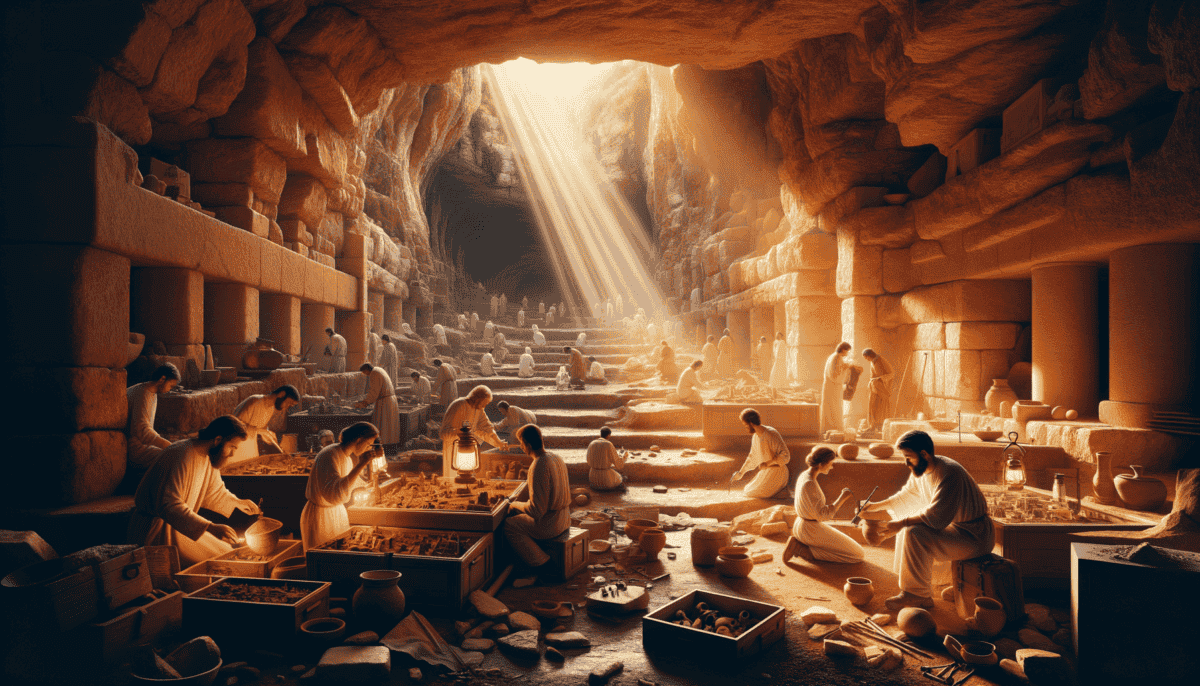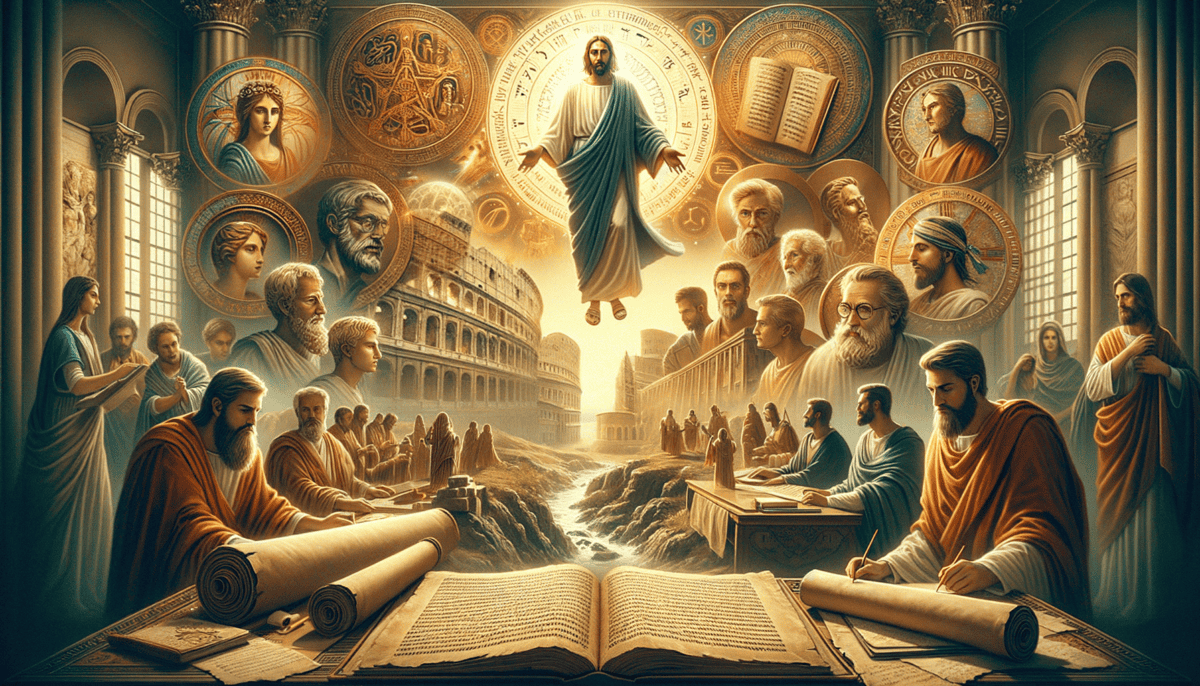The Roman Whispers
Marcus hurried through the bustling streets of Rome, his sandals clicking against the stone pavement. The year was 115 AD, and the great historian Tacitus was about to share something important. ️
"You're late again, young Marcus," Tacitus said with a slight smile as the boy entered the study room. The elderly historian sat at his desk, surrounded by scrolls and writing tools.
"I'm sorry, Master Tacitus," Marcus replied, catching his breath. "The streets were so crowded today!"
"Come here, Marcus. I want to show you something special," Tacitus beckoned. "Today, I'm writing about a group of people called Christians and their leader."
Marcus moved closer, his eyes wide with curiosity. "Who were they, Master?"
Tacitus dipped his quill in ink and began to write. "They follow someone named Christus, who lived in Judea many years ago. Even though their leader died, their beliefs kept growing."
"Were they good people?" Marcus asked, watching the words flow across the page.
"That's not an easy question to answer," Tacitus replied thoughtfully. "The emperor Nero blamed them for the great fire in Rome. But many people say they just want to help others and be kind."
A Special Discovery
"Look here," Tacitus pointed to earlier writings. "Other people wrote about them too. They meet before sunrise to sing songs and promise to be good to each other."
Marcus leaned in closer. "But why are you writing about them now?"
"Because, my young friend, even if we don't believe what they believe, their story is important. As historians, we must write down what happens, even if it's about people different from us."
• They started in Judea
• Their leader was named Christus
• They spread to Rome
• They helped each other
• They faced hard times but kept growing
The sun was setting outside the window, casting long shadows across the study room. Marcus watched as Tacitus carefully rolled up the scroll.
"Remember this day, Marcus," Tacitus said softly. "Sometimes the most important stories are the ones that start as whispers and grow into voices that change the world."
Marcus nodded, knowing he was part of something special. He helped Tacitus put away the writing tools as the last rays of sunlight faded from the room.
Little did Marcus know that the words Tacitus wrote that day would help people thousands of years later learn about Jesus and the first Christians.
The evening bells rang across Rome, calling people home. But the story Tacitus wrote was just beginning its journey through time, waiting to be discovered by future generations who would want to know about Jesus and his followers.
A Scholar’s Journey
The sun blazed hot over Jerusalem as Benjamin, a young helper to Josephus, ran through the dusty streets. He carried a special scroll, holding it close to his chest.
“Master Josephus! Master Josephus!” Benjamin called out as he entered the cool stone building. “I found the records you asked for!”
Josephus looked up from his desk, his eyes bright with interest. “Ah, wonderful! Bring them here, young one.”
Benjamin watched as Josephus carefully unrolled the scroll. “What are you writing about today?”
“I’m writing about someone very special,” Josephus replied. “His name was Jesus, and many people called him the Wise Teacher.”
Stories from the Past
“Tell me more!” Benjamin sat cross-legged on the floor, ready to listen.
“Well,” Josephus began, “Jesus did amazing things that surprised many people. He had followers who loved him very much. Even after he died, people still talked about his teachings.”
• He was a wise teacher
• He had many followers
• People called him the Messiah
• His followers kept his teachings alive
• Both Jews and Romans knew about him
“But Master Josephus,” Benjamin asked, “why do you look worried when you write about this?”
Josephus sighed softly. “Sometimes, Benjamin, writing about the past is like solving a big puzzle. We must be very careful to tell the truth, even when different people remember things differently.”
A Special Task
“Can I help?” Benjamin asked eagerly.
“Yes, you can! Help me gather more stories from the elders in the city. They remember many things about those times.”
Benjamin spent the next days talking to old shopkeepers, temple workers, and travelers. Each person had a different story about Jesus and his followers.
“Writing history is like painting a picture,” Josephus told Benjamin. “We must use many colors to show the whole truth.”
As the sun set that evening, Benjamin watched Josephus write carefully in his big book. The words would help people for many, many years to learn about Jesus.
“Remember, Benjamin,” Josephus said with a smile, “sometimes the most important stories are the ones that make us think hard and ask questions.”
Outside, the stars began to twinkle over Jerusalem. The city was quiet now, but the stories Josephus wrote would travel far and wide, helping people understand more about Jesus and the time when he lived.
Benjamin felt proud to help tell these important stories that people would read for thousands of years.
Letters from Bithynia
The morning sun peeked through the window as Pliny the Younger sat at his desk in Bithynia. He dipped his quill in ink and began writing another letter to Emperor Trajan.
“Dear Emperor,” he wrote, “I need your help with something very important.”
A Puzzling Question
Marcus, Pliny’s young assistant, watched him write. “What’s bothering you, sir?”
“There are people called Christians in our city,” Pliny explained. “They sing songs at sunrise and share meals together. But some folks say they’re causing trouble.”
Marcus looked confused. “What do these Christians do?”
“Well,” Pliny said, scratching his head, “they talk about someone named Jesus who taught them to be kind to others. They meet to share bread and tell stories.”
The Investigation
• They met before sunrise
• They sang songs to Jesus
• They promised to be good
• They shared meals together
• They helped poor people
“I’ve talked to many of them,” Pliny told Marcus. “They seem like nice people, but everyone’s afraid because their ways are different.”
“Sometimes new things can be scary,” Marcus said wisely. “But maybe we should try to understand them better.”
Waiting for Answers
Pliny sealed his letter and gave it to a messenger. Now they had to wait for Emperor Trajan’s reply.
“What do you think the emperor will say?” Marcus asked.
“I hope he tells us to be fair,” Pliny replied. “These Christians believe in doing good things. Maybe we can all learn to live together nicely.” ️
Days turned into weeks as they waited. Pliny kept watching the Christians, learning more about their ways.
“They help sick people,” he told Marcus one day. “And they share food with anyone who’s hungry.”
Marcus smiled. “Maybe they’re not so scary after all.”
Finally, a letter arrived from Emperor Trajan. Pliny read it carefully and nodded. The emperor said to be fair and kind, just as Pliny had hoped.
That night, as the stars twinkled over Bithynia, Pliny wrote in his diary about what he had learned. His words would help people for many years understand more about the early Christians and their teacher, Jesus.
Hidden Words and Ancient Wisdom
Rachel sat in the big library, surrounded by old books. She was looking at special Jewish writings called the Talmud. These books were full of stories from long ago.
A Curious Discovery
“Look what I found!” Rachel called to her teacher, Dr. Sarah. “These old pages talk about someone special.”
Dr. Sarah came closer. “What did you find, Rachel?”
“The rabbis wrote about a teacher who lived in their time. They didn’t always use his name, but we think they were talking about Jesus.”
“Sometimes,” Dr. Sarah explained, “people write about things in different ways. It’s like using a nickname instead of a real name.”
Different Stories, Same Person
Rachel and Dr. Sarah looked at more books together. They found many interesting things:
• Stories about a special teacher
• Talk about new ideas
• Different ways of thinking
• People learning together
• Questions about faith
“Why did they write about Jesus this way?” Rachel asked.
“Well,” Dr. Sarah smiled, “sometimes when people have different beliefs, they see things differently. Like how you and your friend might tell the same story in different ways.”
Learning Together
More students joined Rachel and Dr. Sarah. They all wanted to learn about these old stories.
“It’s like putting together a puzzle,” one student said.
“Yes,” Dr. Sarah agreed. “Each piece helps us understand more about how people lived long ago.”
Rachel wrote everything down in her notebook. She drew pictures of the old books and wrote down the new words she learned.
“These old books are like windows,” she said. “They let us peek into the past and see how people thought about Jesus.”
As the sun set outside the library windows, Rachel knew she had learned something special. The Talmud showed her how different people could tell different parts of the same story.
Together, they were painting a bigger picture of history, one page at a time.
Digging Up The Past
The sun was hot in Jerusalem as Maria wiped sweat from her forehead. She and her team were digging carefully in the dusty ground. They were looking for things from Jesus’ time.
Amazing Discoveries
“Look what I found!” shouted Tommy, Maria’s young helper. He held up an old coin. The coin had writing from the time when Jesus lived.
“Great job, Tommy!” Maria smiled. “This helps us know what money people used back then.”
“Every little thing we find tells us more about life long ago,” Maria explained. “It’s like putting together pieces of a puzzle.”
Signs of the Past
The team found many exciting things:
• Old coins
• Broken pottery
• Stone buildings
• Ancient tools
• Writing on walls
“These things show us that the stories we read are real,” Maria told Tommy. “They help prove what happened long ago.”
Making Connections
Later that day, Maria sat with her team in their tent. They looked at pictures of everything they found.
“See this piece of pottery?” she asked. “It has the same design that Josephus wrote about in his books!”
“And look at these stone steps,” added Tommy. “People walked on these when Jesus was alive!”
The team worked until the stars came out. They carefully cleaned each thing they found and took lots of pictures.
“Tomorrow we’ll dig in a new spot,” Maria said. “Maybe we’ll find more clues about Jesus and his time.”
That night, Tommy wrote in his diary about all the amazing things they found. He drew pictures of the coins and pottery.
“It’s like touching history,” he wrote. “These old things help us understand Jesus better.” ✨
As the team packed up their tools, they knew tomorrow might bring more exciting discoveries. The ground still held many secrets about Jesus’ time, waiting to be found.
A Story for Everyone
Professor Maria sat in her cozy office, looking at all the treasures they found. Pictures of coins, pottery, and old buildings covered her desk. She smiled as she thought about how these items helped tell Jesus’ story.
Bringing Stories Together
“Come in!” Maria called as Tommy knocked on her door. He was excited to help write about their discoveries.
“All these different stories about Jesus are like pieces of a big puzzle,” Tommy said. “The Roman stories, Jewish writings, and things we dug up – they all fit together!”
Stories That Changed the World
Maria opened her computer to show Tommy something special. On the screen were pictures of art, buildings, and books from all over the world. They all told stories about Jesus.
“Look how many different people wrote about Jesus,” Maria pointed out. “Romans like Tacitus, Jewish writers like Josephus, and many others!”
• Written stories
• Art and paintings
• Songs and music
• Buildings and churches
• Things people made
Making History Come Alive
Tommy helped Maria put together a special display at the museum. They showed all the things they found and the stories they learned about.
“Now everyone can see these amazing discoveries,” Tommy said proudly. ️
People from all over came to see the display. Children pressed their faces against the glass cases, looking at the ancient coins. Parents read the stories written long ago by Tacitus and Josephus.
The Story Continues
As Maria watched people learn from their discoveries, she knew their work was important. “These old stories and objects help us understand not just Jesus, but how people lived long ago,” she explained to a group of visitors. ⭐
Tommy stood next to a case holding the coin he found. “Finding these things was like traveling back in time,” he told the visitors. “It makes the stories feel real.”
Maria smiled as she watched more people enter the museum. She knew that as long as people kept learning and discovering, Jesus’ story would continue to touch lives around the world. The ancient writers, the buried treasures, and the countless stories passed down through time all helped paint a picture of this remarkable figure who changed history.
That evening, as Maria locked up the museum, she thought about all the stories yet to be discovered. Perhaps somewhere, buried in the ground or hidden in ancient writings, more pieces of the puzzle were waiting to be found.


